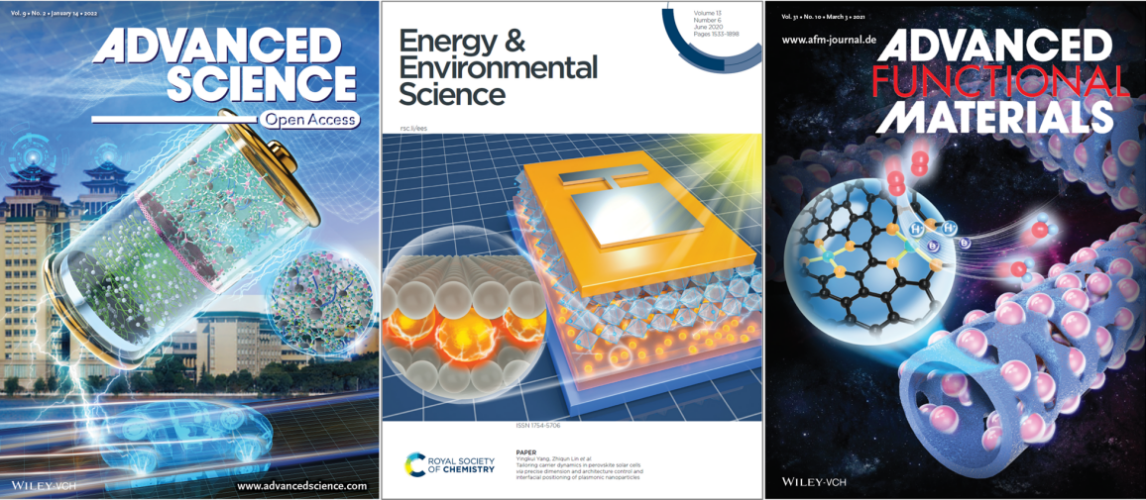Electrode materials determine service performance and cost effectiveness of electrochemical energy. The mainly-used non-organic materials such as metal compounds and precious metals nowadays may face challenges such as energy limitation, resource depletion, high cost and difficult recycling. Using Organic polymers as electrode materials has the advantages of abundant resources, adjustable structure, theoretically high capacity, low cost, easy recycling and renewable. However, there are still some problems such as poor conductivity, small actual capacity, low output voltage and poor stability, which are difficult to meet the application requirements of high energy and power, and long circulation. In recent years, Professor Yang Yingkui’s team, from Chemical Materials School of SCMU, has carried out research on the above problems and made important progress in this field.

Articles published in top journals. Photo by Chemical Materials School
The innovation achievements mainly include three aspects. First, intrinsic polymer electrode materials. Synergistically improve the positive electrode voltage, reactivity and energy density by adjusting the active center and the chain structure, modulating the electron effect, and regulating the topology and aggregate structure. The structure-activity relationship between the intrinsic structure and performance is also described.
Second, compound polymer electrode materials. Put forward the concept that core-shell heterostructure, nano hybrid string of crystal and sandwich structure was formed from “in situ reaction nucleation”, building three-dimensional electronic/ionic conduction network, and tuning energy storage mechanism so as to improve the electrode’s conductivity, actual capacity and cyclic performance.
Third, polymer derived nanostructure. The nanostructure and surface/interface load transport capacity are regulated by spatially limited polymerization and soft template reaction, and the energy conversion efficiency is improved by modulating the electronic structure. Reactivity is strengthened by combing chemical doping and metal monatomic loading, and battery energy density and service stability are enhanced by combing the multi-graded composite structure. The research findings provide a new perspective for the development of high performance, low cost nanostructured energy materials.
Since 2016, Professor Yang’s team has won seven national funds projects, and was admitted as an innovation group of Hubei Province. He has published 42 SCI paper in top journals as the corresponding author, which has great academic influence. In addition, he established graphene R&D center with Guangdong enterprises, set up Foshan “Blue Ocean Talent Program” innovation and entrepreneurship team, obtained 16 patents, and completed three technology transfer. He also founded a company that was selected as a national high-tech enterprise, and developed a series of new products such as conductive paste, photovoltaic paste and surface treatment agent, which generated good economic and social benefits.
Edited by Liu Qiong
Reviewed by Pan Wenjun